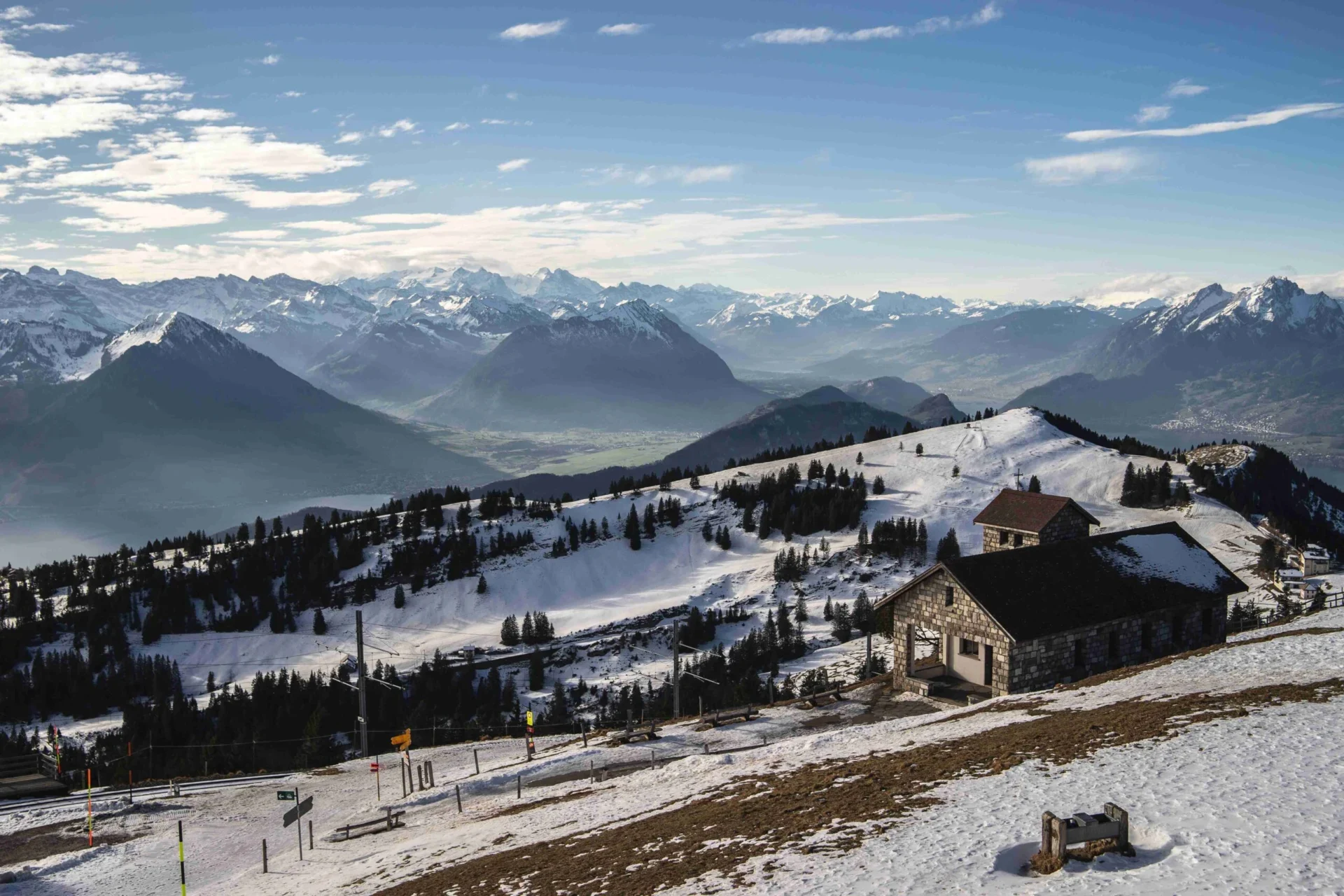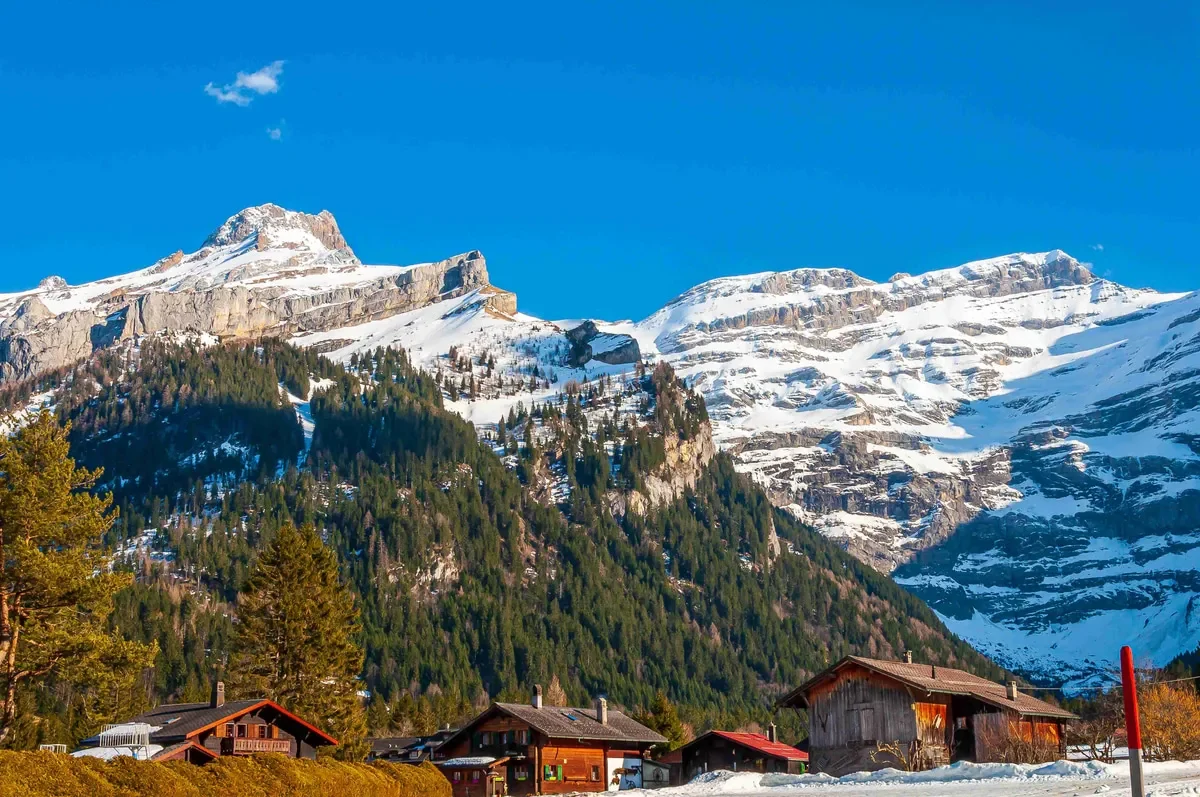Choosing the best time to visit Switzerland can be tricky, especially when you’re juggling weather, crowds, and costs. Are you trying to avoid tourist-filled ski resorts or overpriced hotel rooms during peak seasons? Or maybe you’re looking for mild weather but don’t want to get caught in rainy spells?
Planning the perfect trip without these headaches can feel overwhelming.
In this guide, we’ll break down what each season in Switzerland offers so you can decide the best time for your visit—minus the stress and surprises.
Planning Your Trip to Switzerland
There are many factors to consider when planning your trip to Switzerland, from the best time to visit to budgeting and transportation. Here’s a quick guide to help you get started.
When is the Best Time to Visit Switzerland?
The best time to go to Switzerland depends on what you want to do. For fewer crowds and good weather, the best months are April through June and September to October. These are considered to be the best months because the weather is pretty warm, but not too hot, and perfect for enjoying the views. In spring and early summer, the days are long and clear.
The end of April to June is ideal for hiking and sightseeing. September to early October brings cooler temperatures, making it a great season for travel, especially if you prefer fewer tourists. July and August are the warmest months but also the busiest due to the summer holiday season. You’ll still find good weather, but it may be crowded.
When is the Cheapest Time/Season to Visit Switzerland?
The cheapest time or season to visit Switzerland is during the fall, especially from September to October. Fewer travelers visit during this period, so prices for flights and accommodations drop. You’ll still be able to see the beautiful fall colors, and the lower number of tourists makes it easier to enjoy popular spots without the crowds.
When is Peak Travel Season in Switzerland?
The peak travel season in Switzerland is during the summer months, from June to August. July and August are the busiest. This is especially in popular tourist destinations like the Swiss Alps, towns and cities such as Zurich and Lucerne, and lakeside areas. During this time, many travelers, like the Swiss themselves, take advantage of the warm weather to visit.
Cities and towns can be crowded, and prices for accommodations are higher. If you prefer to avoid large numbers of tourists, consider visiting in late spring or early fall instead.
When is the Best Time to Ski in Switzerland?
The main ski season in Switzerland runs from December to March, with the best conditions usually in February and March. Popular resorts like Titlis and Jungfraujoch offer excellent trails, and snow is reliable at higher elevations. For those looking to ski at lower levels, valley trails and pastures at altitudes up to 2000 meters may still have good snow.
Take a trip during this time to enjoy a range of slopes, whether you’re skiing at the higher peaks or along the well-maintained trails in the lower regions. Late March often provides great skiing conditions with fewer crowds.
I’m Visiting Switzerland for the First Time. Which Cities Should I Explore?
Switzerland offers a mix of historic cities and stunning landscapes. If it’s your first time visiting the country, here are five towns and cities you shouldn’t miss. Each location provides a unique glimpse into Swiss culture, with plenty to do and see.
- Zurich – Zurich is one of Switzerland’s most popular tourist destinations and is the largest city. Known for its lively art scene and high-end shopping, it’s also a great base to explore the surrounding lakes and mountains. Visit the old town to learn about its history and culture.
- Geneva – Located on the shores of Lake Geneva. This place is known for its international atmosphere. Geneva has several museums, the United Nations headquarters, and charming parks. Don’t forget to check out the nearby vineyards during the grape harvest festival.
- Zermatt – Famous for the Matterhorn, Zermatt is ideal for hiking and skiing. This car-free village provides breathtaking mountain views and plenty of outdoor activities year-round. It’s a great spot if you love nature and outdoor adventures.
- Bern – Switzerland’s capital city, Bern, is known for its medieval old town, a UNESCO World Heritage site. It’s a wonderful place to walk around and discover Swiss history, as well as a good location to explore the countryside nearby.
- Basel – Basel is a cultural hub with a thriving art scene and several museums. It’s also close to both the French and German borders, making it a great stop if you’re traveling across Europe. The city hosts various festivals throughout the year.
These cities and towns perfectly introduce Switzerland’s rich culture and stunning landscapes.
Climate and Weather Patterns Across Switzerland’s Changing Seasons
The first consideration you should remember when visiting and driving in Switzerland is its altitude differences, which can lead to varied average temperatures across the country. Seasons change dramatically; understanding these patterns will help you plan the best trip.
Winter (December – February)
Switzerland’s winter is cold, especially in mountainous areas where ski resorts attract many visitors. Snow blankets much of the country, and temperatures can drop to freezing levels, especially in higher regions.
For those in cities like Zurich, expect colder days with occasional rain. However, the season also brings festive cheer with the famous Christmas markets and opportunities for winter sports.
Average temperatures:
- December: -1°C to 4°C (30°F to 39°F)
- January: -2°C to 7°C (28°F to 45°F)
- February: -2°C to 8°C (28°F to 46°F)
Spring (March-May)
Spring is unpredictable, with both bright sun and sudden showers of rain. Temperatures start to rise, but snow may still linger in higher altitudes. The average temperature hovers between 8°C to 15°C in the lowlands, while the mountains remain cooler.
Average temperatures:
- March: 0°C to 9°C (32°F to 48°F)
- April: 3°C to 13°C (38°F to 55°F)
- May: 7°C to 17°C (45°F to 63°F)
Summer (June – August)
In the summer, Switzerland enjoys long days with crisp blue skies. Lowland cities like Zurich can reach an average temperature of 25°C, while cooler conditions prevail in the mountains. Rain is common in the afternoons, so be prepared for sudden downpours.
Average temperatures:
- June: 15°C to 21°C (59°F to 70°F)
- July: 18°C to 24°C (64°F to 75°F)
- August: 17°C to 23°C (63°F to 73°F)
Autumn (September – November)
Autumn brings cooler temperatures and more frequent rain. Early autumn can still offer bright sun, but by November, the average temperature drops, and snow starts appearing in higher areas, preparing ski resorts for winter.
Average temperatures:
- September: 10°C to 20°C (50°F to 68°F)
- October: 7°C to 14°C (45°F to 57°F)
- November: 2°C to 7°C (36°F to 45°F)
Month-by-Month Guide to Visiting Switzerland’s Top Regions

Source: Image by wirestock on Freepik
Switzerland offers a wide range of experiences, and the best time to visit depends on what you’re looking for—whether it’s hiking through mountain scenery, enjoying Christmas markets, or attending seasonal events like Swiss National Day.
Here’s a breakdown of Switzerland’s regions by season to help you plan.
April – June (Spring)
Spring is a great time to visit for milder weather and blooming landscapes. In lower regions like Zurich, rainfall is common, but the temperatures are comfortable, making it ideal for sightseeing.
As the snow melts in the mountains, hikers can enjoy the emerging green slopes. You’ll also find handmade crafts at local fairs, which is a nice preview before the summer rush begins.
July – August (Summer)
Summer is peak season, especially in higher-altitude areas. If you’re in Zurich in August, don’t miss Swiss National Day, where the city lights up with fireworks and traditional food stalls.
The weather is warm and perfect for outdoor activities. Be prepared for afternoon rainfall, though, which can be heavy at times. The mountain scenery is on full display, offering excellent hiking conditions.
November – March (Winter)
Winter is all about skiing and festive charm. The ski resorts are in full swing, offering excellent conditions for snow sports. In cities like Zurich, Christmas markets bring the festive season to life with beautiful decorations and handmade crafts for sale. Temperatures dip below freezing, so bundle up if you plan to explore the city or visit mountain villages.
September – October (Fall)
Fall is a quieter season, with cooler temperatures and fewer crowds. The mountain scenery transitions into autumn colors, creating a beautiful backdrop for hiking. Rainfall increases during this time, so it’s good to be prepared for some wet days.
Traditional fall foods, like fondue, start appearing in restaurants, offering a taste of Swiss culture before winter begins.
Seasonal Travel Tips for Experiencing Switzerland at Its Best
Building on the previous month-by-month guide, here are some practical tips to help you make the most of Switzerland’s seasonal highlights. Whether it’s spotting alpine wildflowers in spring or enjoying the festive atmosphere of Christmas markets, each season offers something special.
Below are tips tailored to ensure your trip is perfectly timed and prepared.
Visit During Shoulder Season
Traveling in the shoulder season (spring and fall) can be a smart choice. You’ll experience milder weather and fewer tourists, especially in popular mountain resorts.
Spring brings colorful wildflowers along the hiking trails, while fall is known for its rich harvest beauty and striking fall colors in the landscape. This is also a great time to find better accommodation deals.
Use Cable Cars for Mountain Access
Switzerland’s cable cars are essential for reaching the country’s famous high-altitude spots. These are especially useful in summer and early autumn, giving access to the mountain scenery without the crowds of peak season.
In winter, they become crucial for reaching the top ski slopes and admiring the snow-covered landscape. Be sure to check the schedule, as some routes are seasonal.
Celebrate Seasonal Events
Switzerland’s seasonal events add a unique touch to your visit. Winter brings festive Christmas markets where you can shop for handmade crafts and sample local treats. Summer is highlighted by Swiss National Day in August, a nationwide celebration with food, fireworks, and entertainment. In the fall, head to the wine regions during the grape harvests to learn about Swiss winemaking traditions and enjoy tastings.
Prepare for Changing Weather
Switzerland’s weather varies greatly by altitude, so packing layers is essential. In spring and fall, expect unpredictable rainfall—especially if you’re hiking in the mountains. In winter, pack warm clothing to stay comfortable when visiting ski areas and snow-capped peaks.
Summer can also bring sudden rains, particularly in the afternoons, so it’s wise to carry a light jacket or umbrella.
Inspiration and Ideas for Memorable Swiss Getaways

Source: Image by freepik
Is this your first time planning a trip to Switzerland, or are you looking to discover more of what the country offers? From scenic Lake Lugano to cultural festivals like Ascona Art Festival, Switzerland promises a rich mix of experiences. Whether it’s sorting out your budget planning or finding the best hiking trails, this guide will give you fresh ideas to make your Swiss getaway special.
Let’s explore a few highlights so you can get the most out of your trip.
Immerse Yourself in Local Festivals
Switzerland’s cultural scene thrives with exciting festivals throughout the year. Head to Ascona for the Ascona Art Festival, where you’ll find a mix of exhibitions, street performances by artisti di strada, and creative workshops.
If you’re visiting Geneva in June, don’t miss the Fête de la Musique, which brings the city to life with free concerts and performances spread across the streets and parks. These events are great additions to any Swiss itinerary and can be found in many travel guides.
Relax by Switzerland’s Beautiful Lakes
For those who enjoy a more laid-back trip, Switzerland’s lake regions are perfect for relaxation and scenic views. Lake Lugano and Lake Maggiore offer serene surroundings and are great spots for lakeside walks or boat rides.
If you’re visiting the area, consider a stop at Ronco sopra Ascona, a small village perched above Lake Maggiore, known for its panoramic views and peaceful vibe.
Explore the Outdoors with Scenic Tours and Hikes
Switzerland is a haven for nature lovers, with countless hiking trails and panoramic tours available. Whether you’re trekking through the Alps or taking one of the country’s famous scenic train rides, you’ll witness the natural beauty Switzerland is known for.
Planning your route with help from trip specialists or travel guides can ensure you make the most of these outdoor activities while sticking to your budget and time constraints.
Plan Ahead with Budget and Specialists
Switzerland can be expensive, but careful budget planning can help you get more for your money. Working with trip specialists can help you customize your itinerary, whether you’re focused on cultural festivals, lakeside relaxation, or outdoor activities.
They can also help you find affordable accommodations and transportation options, like rail passes for scenic train rides, making it easier to stick to your budget.
Essential Travel Tips for Making the Most of Switzerland
Before we end this guide, let’s go over some general travel tips to help you plan your Swiss getaway smoothly. These tips will help you avoid common travel hiccups and make the most of your time in Switzerland.
Pack Smart for Changing Weather
Switzerland’s weather can vary greatly depending on the shoulder seasons and the region you’re visiting. In the mountains, temperatures can drop suddenly, so pack layers—even in summer. A lightweight rain jacket and sturdy walking shoes are essential, especially if you plan to hit the hiking trails.
Money Matters
Switzerland is known for being pricey, so planning your budget in advance is key. Keep in mind that Switzerland uses the Swiss franc (CHF), not the euro, although some places near the borders may accept both. Credit cards are widely accepted, but it’s good to carry some cash for smaller establishments.
Make sure to check for any transaction fees your bank may charge for international purchases.
Driving in Switzerland? Get Your IDP
If you’re planning to rent a car and drive in Switzerland, it’s recommended to get your IDP online through the International Driver’s Association before your trip. While Switzerland honors foreign licenses, an IDP provides an extra layer of documentation, which may be requested by car rental companies or police.
Also, familiarize yourself with Swiss road rules, especially regarding speed limits and tolls.
Learn Some Local Phrases
While many Swiss people speak English, learning a few basic phrases in the local language shows respect and can enhance your travel experience. Depending on the region, here are some helpful phrases:
- German-speaking areas:
- Hello: Grüezi
- Thank you: Danke
- Goodbye: Auf Wiedersehen
- French-speaking areas:
- Hello: Bonjour
- Thank you: Merci
- Goodbye: Au revoir
- Italian-speaking areas:
- Hello: Ciao or Buongiorno
- Thank you: Grazie
- Goodbye: Arrivederci
Follow US State Department Advice
Before heading to Switzerland, it’s wise to check the US State Department travel advice for any updates on safety, visa requirements, or health advisories. This will help you stay informed of any current issues that may impact your trip.
Know Where to Find Emergency US Support
In case of an emergency, make sure you know how to reach the US Embassy or Consulate in Switzerland. They can assist with emergency US support in cases such as lost passports or unexpected situations.
FAQs
What is the best time for non-skiers to visit the Matterhorn?
If you’re not into skiing, the best time to go to the Matterhorn is during the summer season (June to August). The weather is pleasant, the hiking trails are open, and the iconic peak offers stunning views. You’ll also have access to cable cars for panoramic tours without snow.
Is Lake Geneva worth visiting in the spring?
Visiting Lake Geneva in April and May is ideal if you prefer fewer crowds and mild weather. The spring bloom makes the surrounding parks vibrant, and you’ll still be able to enjoy boat trips around the lake. It’s also a great time for sightseeing in Montreux.
What activities can I enjoy in Interlaken during summer?
The summer season in Interlaken is perfect for outdoor activities like hiking and paragliding. The weather is warm, and you can take advantage of the extended daylight hours. Hiking the trails around Interlaken offers amazing views, and paragliding over the town is a must-try for thrill-seekers.
When is the low season in Switzerland, and why visit then?
The low season in Switzerland, from March to May and September to October, is perfect for those who want to avoid crowds and enjoy more affordable travel. The weather is still pleasant, especially at lower elevations, and it’s a great time for hiking and exploring the Swiss Alps.
Is late spring a good time to visit the Rhine Falls?
Late May is considered one of the best times to visit the Rhine Falls. The waterfall is at its peak flow due to melting snow, making the sight even more impressive. You’ll also find fewer tourists compared to the busy summer season, allowing for a more relaxed experience.
Can I enjoy outdoor activities during a trip to Switzerland in May?
A trip to Switzerland in May is ideal for outdoor activities, especially in lower elevations. The snow starts to melt, revealing beautiful hiking trails around places like Lucerne and Interlaken. While the higher Alps may still have snow, May offers great conditions for walking and sightseeing.
What’s special about the Montreux Jazz Festival?
The Montreux Jazz Festival, held in July on the shores of Lake Geneva, is one of the most iconic music festivals in Europe. Featuring a mix of global artists, it draws crowds from all over the world. Attending this event during summer lets you enjoy great music alongside beautiful lake views.
What is the best time to visit Zermatt for hiking?
For hiking enthusiasts, the best time to visit Zermatt is during the summer months from June to August. The trails are clear of snow, the weather is warm, and you’ll have stunning views of the Matterhorn. Zermatt offers trails suitable for all skill levels, making it a great summer destination.
What makes Lucerne a great place to visit in the fall?
Lucerne in early October is perfect for those wanting to enjoy Switzerland’s beautiful fall colors without the crowds of the busy summer. The weather is still mild, and you can explore the city or take a boat tour on the lake while admiring the changing colors of the surrounding forests.
Is December to February the best time for winter sports enthusiasts?
Yes, the December to February period is the best for winter sports enthusiasts. Switzerland’s skiing and snowboarding resorts, especially around Zermatt and the Swiss Alps, offer excellent snow conditions. You’ll also find vibrant Christmas markets in cities like Zurich, making it a festive time to visit Switzerland.







